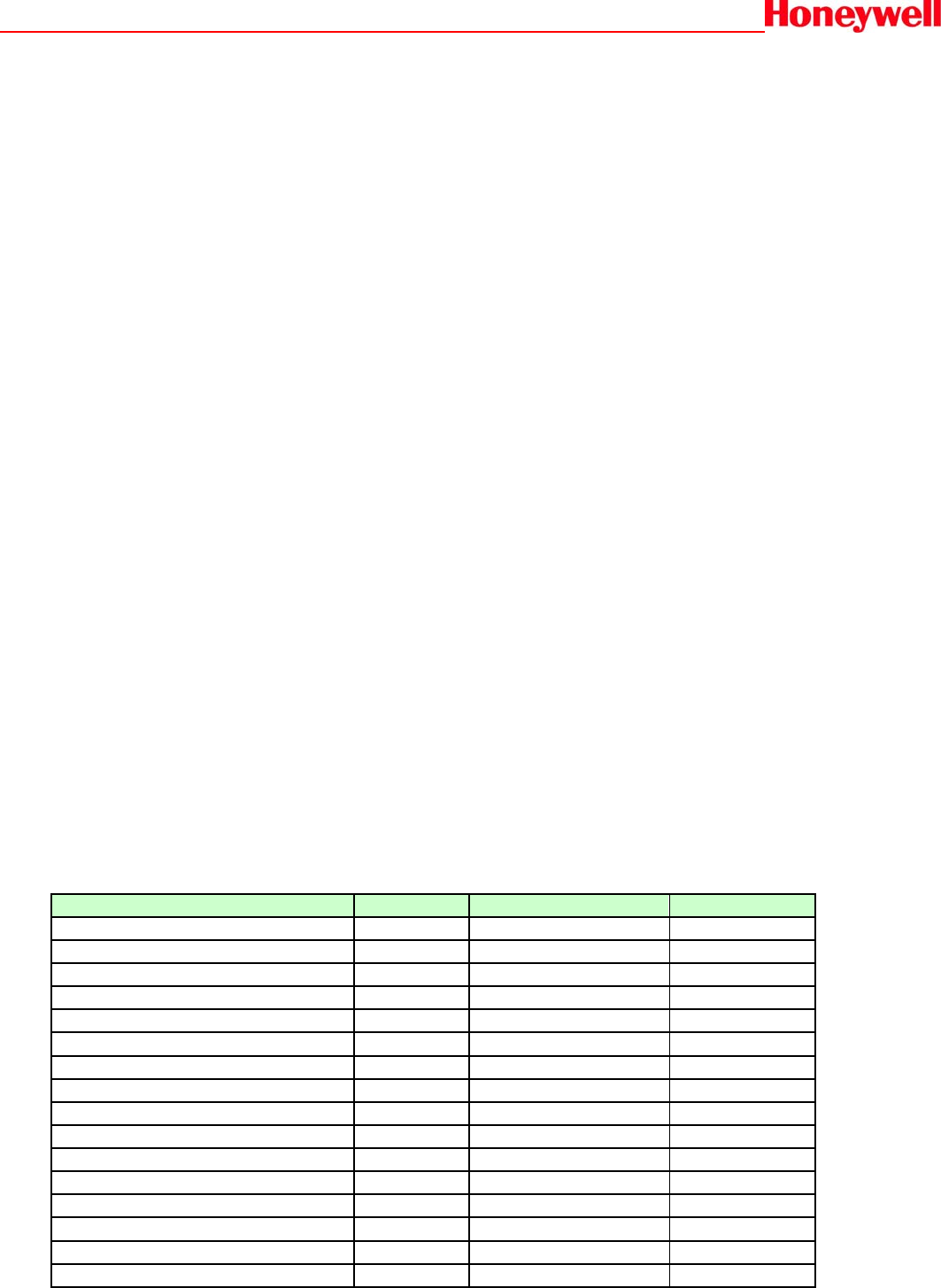Intermec Technologies 1000CP01UX1 1000CP01U-H1, 1000CP02U-H1, 1001CP01U-H1 User Manual HSM HAC products weblist
Intermec Technologies Corporation 1000CP01U-H1, 1000CP02U-H1, 1001CP01U-H1 HSM HAC products weblist
Contents
HAC Weblist

Honeywell International Inc
Honeywell Scanning and Mobility
9680 Old Bailes Road
Fort Mill, SC 29707 USA
Date: 26-February-2015
Hearing Aid Compatibility (HAC) Device Listings
The standard for compatibility of digital wireless devices with hearing aids is set forth in American National Standards
Institute (ANSI) standard C63.19. ANSI C63.19 contains two sets of standards: an "M" rating from M1 to M4 for reduced
radio frequency (RF) interference to enable acoustic coupling with hearing aids that do not operate in t-coil mode, and a
"T" rating from T1 to T4 to enable inductive coupling with hearing aids operating in t-coil mode. A digital wireless handset
is considered hearing aid-compatible for acoustic coupling if it meets at least an "M3" rating under the ANSI standard. A
digital wireless handset is considered hearing aid compatible for inductive coupling if it meets at least a "T3" rating under
the ANSI standard.
M-Ratings: Devices rated M3 or M4 meet FCC requirements and are likely to generate less interference with hearing
devices than devices that are not labeled. M4 is the superior/higher of the two ratings.
T-Ratings: Devices rated T3 or T4 meet FCC requirements and are likely to be more usable with a hearing device’s t-coil
than unrated devices. T4 is the superior/higher of the two ratings.
These ratings are not guaranteed. Results will vary depending on the level of immunity of your hearing device and the
degree of your hearing loss. If your hearing device happens to be vulnerable to interference, you may not be able to use a
rated device successfully. Trying out the device with your hearing device is the best way to evaluate it for your personal
needs.
When some wireless devices are used near some hearing devices such as hearing aids and implants, users may detect a
buzzing or humming noise. Some hearing devices are more immune than others to this interference noise. Wireless
devices may also vary in the amount of interference they generate.
The more immune the hearing aid device is, the less likely one is to experience interference noise from the wireless
device. Hearing aid devices may also be rated. Adding the ratings of the hearing aid and the device can predict the
usability of the two devices together:
• Any combined rating equal to or greater than six offers the best use.
• Any combined rating equal to five is considered normal use.
Note for models tested under 2007 C63.19 Version: These models have been tested and rated for use with hearing aids
for some of the wireless technologies that they use. However, there may be some newer wireless technologies used in
these devices that have not been tested yet for use with hearing aids. It is important to try the different features of these
devices thoroughly and in different locations, using your hearing aid or cochlear implant, to determine if you hear any
interfering noise. Consult your service provider or the manufacturer of the device for information on hearing aid
compatibility. If you have questions about return or exchange policies, consult your service provider or device retailer.
The following devices are currently offered:
HSM Model NameHAC Rating Air - Interface C63.19 Version
6000LUM3 / T3 GSM/WCDMA 2007
60SLUM3 / T3 GSM/WCDMA 2007
70ELG0M4 / T4 GSM/CDMA/WCDMA 2011
70ELGNM4 / T4 GSM/CDMA/WCDMA 2011
7800LWM3 / T3 GSM/WCDMA 2007
9700LUPM3 / T3 GSM/WCDMA 2007
99EXLWM3 / T3 GSM/WCDMA 2007
CN50M4 GSM/CDMA/WCDMA 2007
CS40 / Model 1005CP01M3 GSM/WCDMA 2007
CK70 CDMA / Model 1001CP01C-H1 M4 / T4 CDMA 2011
CK70 UMTS / Model 1001CP01U-H1 M4 / T3 GSM/WCDMA 2011
CN51 / Model 1015CP01S M3 GSM/CDMA/WCDMA 2011
CN70 CDMA / Model 1000CP01C-H1 M4 / T4 CDMA 2011
CN70 UMTS / Model 1000CP01U-H1 M4 / T3 GSM/WCDMA 2011
CN70e CDMA / Model 1000CP02C-H1M4 / T4 CDMA 2011
CN70e UMTS / Model 1000CP02U-H1M4 / T3 GSM/WCDMA 2011